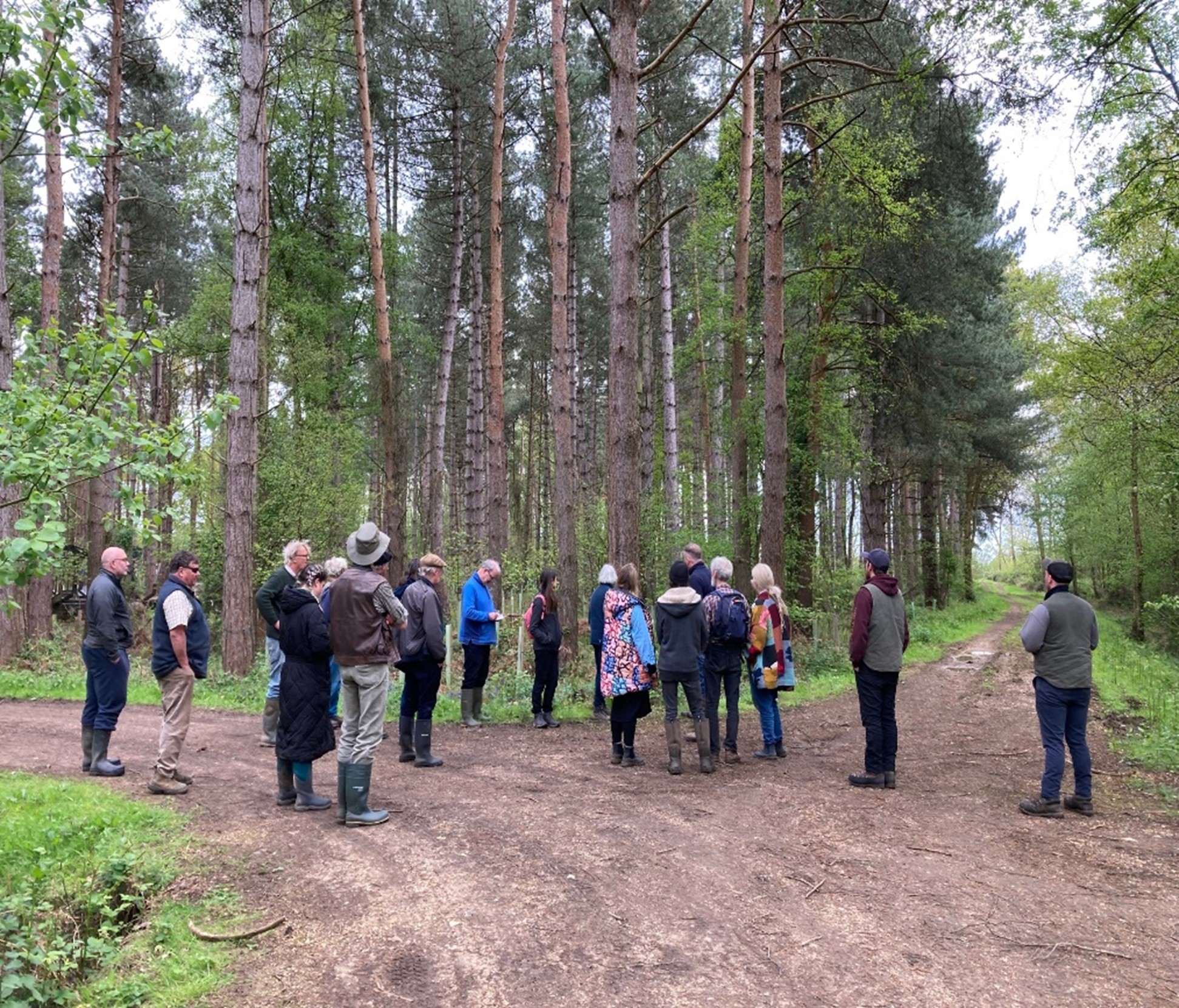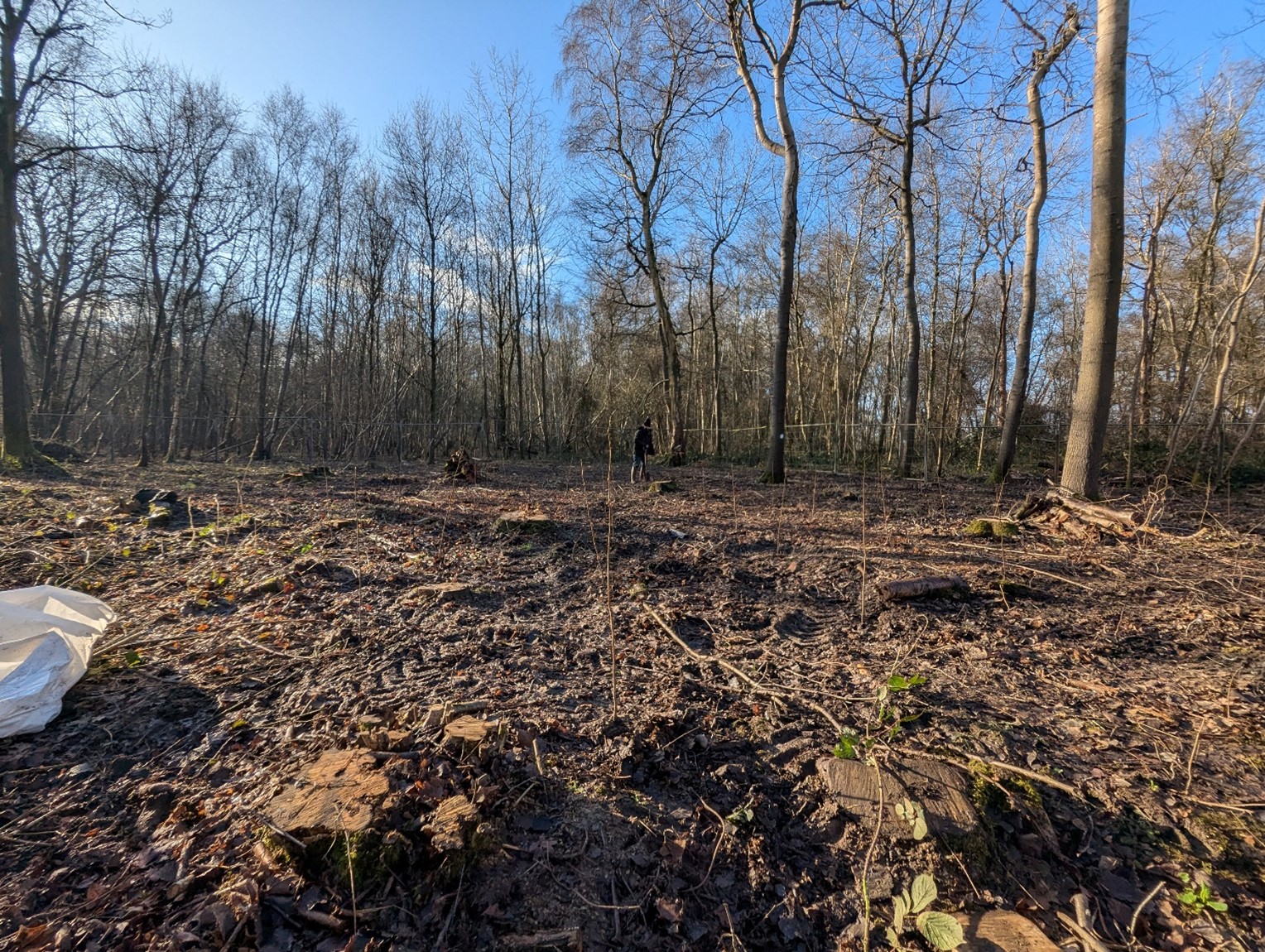Farming in Protected Landscapes Case Study:
Twinstead Hall Wood - Demonstration & Regeneration

Between 2023-25, Eco-Planning UK was awarded £15,112 to support the programme of restoration of a 21ha block of mixed ancient semi-natural woodland and plantation on this Ancient Woodland Site.
The work will also see Twinstead Hall Wood used as a Demonstration Woodland to provide two training and knowledge sharing sessions for members of Stour Valley Farmer Cluster and woodland owners in the Dedham Vale.
Why was this project needed?
Twinstead Hall woodland is classified as ancient, replanted woodland. There was large scale harvesting of the majority of the standing timber in the mid C20 (in previous ownership). The Forestry Commission compulsory planted 8ha of Corsican Pine in the 1960s. The remainder of the wood was left with several areas retaining a poor-quality coppice with standard structure and only small pockets of native trees.
The 2023 State of Nature Report identifies that: “Changes in woodland structure following the loss of traditional management techniques have been identified as one of the main drivers of population decline of specialist woodland birds” p30. Only 7% of all UK broadleaved woodland is considered to be in “good condition”.
The current landowner, Patrick McKenna, has been managing the wood for 11 years and has created a programme of work to restore its resilience and wildlife. He applied for this grant to support the on-going programme of re-stocking worked coppice compartments to restore density structure and viability, and to convert the conifer areas back to traditionally managed native broadleaf woodland.
What value does traditionally managed woodland have?
Most ancient semi natural woodland in East Anglia had coppice with standard structure reflecting centuries of active management. The coppice or underwood was historically harvested on a varying cycle of 7-20 years for uses such as; furniture making, fencing, charcoal and thatching spars.
Standard or timber trees scattered throughout the coppice coupes are harvested at longer intervals of 80+ years - according to species and intended use. Managing woodland in this way is rare nowadays. Lack of management since WW1 has led to most lowland woodlands having poor stand density and structure. This adversely affects biodiversity, economic sustainability and resilience to climate change.

The photo above shows new hazel whips planted in the woodland. In all, over 3,000 native trees were planted. As well as benefiting wildlife, this will aid sequestration of carbon and slow the flow of water through the woodland.
The woodland is known to support breeding populations of hazel dormouse and stag beetle - both priority species. Restoring the ancient woodland will allow ground flora to flourish (for example, wood anemone, primrose and bluebell). Enhanced structure will also provide better nesting and foraging opportunities for priority bird species such as the Lesser Spotted Woodpecker which is found here.
What can other landowners learn from Twinstead Hall Wood?
Twinstead Hall Wood is the only woodland in private ownership in the wider Dedham Vale area that is known to the Cluster Facilitator where the diversity and extent of management practices demonstrated can be seen.
The drivers and economics of managing private woodland are not directly comparable to those for woodlands in the ownership of charities/Trusts etc. The opportunity to use the wood as a demonstration area for the woodland owners in Dedham Vale National Landscape and participants in the Landscape Recovery project will provideinspiration and direction for other woodland managers.
It will encourage the review of current wider scale woodland management practice through the two farmer Clusters and provide confidence through providing a local example of what can be achieved.
